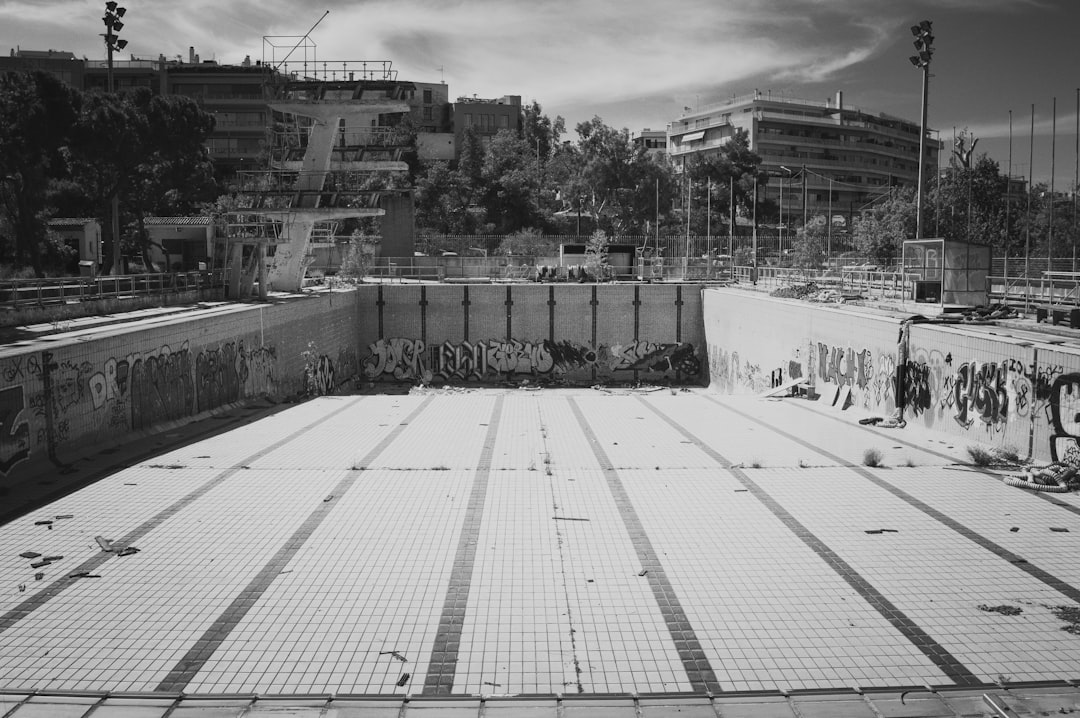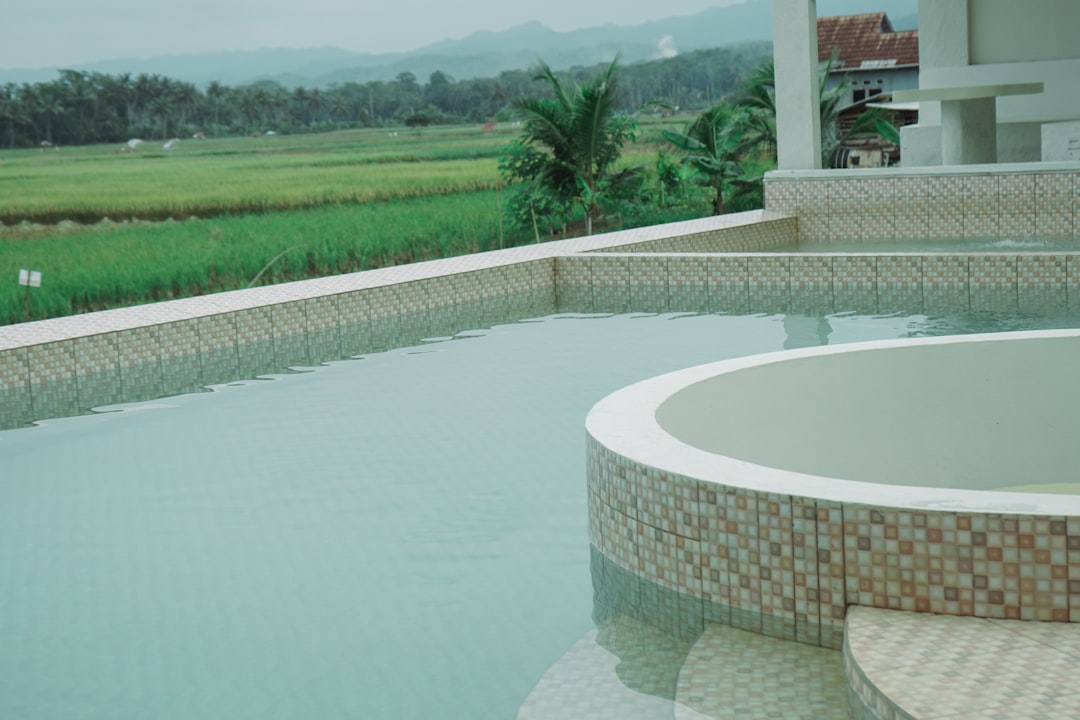

Engage prospects with a scan and streamline customer engagement with FREE QR code marketing tools by Sona – no strings attached!
Create a Free QR CodeFree consultation

No commitment

Engage prospects with a scan and streamline customer engagement with FREE QR code marketing tools by Sona – no strings attached!
Create a Free QR CodeFree consultation

No commitment
Pool construction companies increasingly find themselves navigating a fast-changing digital landscape, where today’s homeowners and property managers demand fast, transparent interactions throughout their pool project journey. Relying strictly on static brochures, paper forms, or traditional pool marketing often means missing out on high-intent leads or losing track of prospects who research options outside formal touchpoints. These missed connections are particularly costly in a market where a single overlooked decision-maker might translate into a lost opportunity.
Serving this new generation of clients means bridging the gap between offline and online experiences, ensuring every physical encounter, whether a jobsite sign or trade show booth, can seamlessly connect to a richer digital journey. QR codes have quickly emerged as a practical, versatile tool in this shift. For swimming pool builders, pool maintenance providers, and remodelers, QR codes now act as a frictionless way for clients to access detailed project galleries, request quotes, or compare top-tier material options, all in real time, right from their smartphone.
This article explores practical ways QR codes can help pool construction companies increase lead quality, capture critical intent signals before they go cold, and turn every customer touchpoint into a measurable growth opportunity.

QR codes are closing persistent gaps between physical campaign elements and digital lead capture, an area where pool builders frequently lose sight of high-value prospects who do not fill out web forms or get lost in manual follow-up. Traditional tactics like handing out brochures or relying on passersby to remember your brand later create unnecessary friction. That friction lets motivated buyers drift to competitors who make it easy to explore options and book time with a specialist immediately.
To meet modern expectations, forward-thinking pool construction companies are weaving QR codes into every offline-to-online moment and then measuring the results. When a homeowner scans a code on your yard sign and lands on a mobile-first experience with pricing ranges, inspiration galleries, and a fast quote flow, you capture intent while it is freshest. When a property manager scans a QR on a proposal and instantly schedules a site walk-through or checks permit FAQs, you speed up decision cycles and reduce back-and-forth with your team.
Some companies now use tools built for construction and home services to automate code generation, target content by audience segment, and stream scan data into CRMs and marketing automation. Platforms like Sona QR and Sona.com centralize this workflow, ensuring timely engagement, clean attribution, and continuous optimization without heavy manual effort. For deeper context, see Sona’s blog post on revenue attribution.

For years, pool contractors have struggled to connect offline marketing like yard signs, brochures, and door hangers to real digital results. Someone views your billboard or walks past a stunning renovation in their neighborhood, but unless they search your name later and find the right page, their interest remains anonymous. Those offline-to-online gaps cause lead leakage, inflate acquisition costs, and make it hard to justify spend on physical media.
QR codes solve this by providing a one-scan bridge from curiosity to action. Homeowners can immediately open a project calculator, browse a curated gallery of pools relevant to their property size, or start a pre-qualified quote. Property managers can instantly check warranty coverage, compliance details, or energy-efficient equipment options. This speed and simplicity are crucial in a category where buyers are comparing brands on responsiveness as much as craftsmanship.
Dynamic QR codes are particularly valuable in pool construction because they allow you to update what a scanner sees without reprinting materials. You can rotate seasonal promotions, swap in new tile or finish collections, or refresh financing options as rates change. You also gain detailed scan-level analytics like time, location, and device. This visibility reveals which placements and messages truly drive engagement, which helps you shift budget toward winners and retire underperformers with confidence.
The versatility of QR formats lets pool companies solve multiple workflow and marketing challenges with a single technology. You can address both demand generation and customer support without complicating the experience. Start with the formats most aligned to your primary goals, then expand across the customer lifecycle.
Dynamic QR codes are the preferred option for most pool construction scenarios because they offer content flexibility, analytics, and the ability to integrate with CRMs and ad platforms. Static QR codes can be used for evergreen assets like a warranty PDF, but they will not support updates or performance analysis.

When every physical asset becomes a digital entry point, you gain new insight into which touchpoints drive real business and where you should double down. In pool construction, several placements consistently produce high-intent engagement when paired with strong calls to action and mobile-first destinations.
By treating each physical surface as a potential start to a digital journey, pool companies convert casual curiosity into structured conversations. Over time, scan analytics reveal which communities, messages, and materials produce the most revenue, so you invest in the channels that perform.

QR codes shine when they make the next step obvious and valuable. The following use cases map directly to typical moments in a pool buyer’s journey, from initial inspiration to financing and follow-up. Each use case supports a clear business outcome and yields data you can use for optimization.
These use cases also reinforce brand credibility. Transparent experiences that respect a buyer’s time and provide immediate value differentiate your firm in a crowded market, especially for buyers who have been frustrated by vague pricing or slow responses.
Each scan captures intent, context, and behavior that you can use to segment audiences and run smarter campaigns. Instead of relying on generic website traffic, you can build lists based on the specific codes scanned, the location and timing, and the content consumed after the click. Over time, this creates a durable advantage in ad efficiency and nurture performance. For campaign ideas, see Sona’s retargeting playbook.
Start by assigning distinct QR codes for each journey stage and use case. For pool construction, this typically means separate codes for awareness content like neighborhood showcases, consideration content like gallery filters and materials, and conversion content like financing or booking. When a homeowner scans a code at a jobsite, they likely want design inspiration and neighborhood proof. When they scan a financing code on a proposal, they are close to making a decision and need clarity on monthly payments and incentives.
With a platform like Sona QR, each code can carry metadata that automatically creates these segments. Sales receives context-rich alerts, marketing builds lookalikes from high-quality segments, and operations can prioritize scheduling for buyers showing strong intent signals.
QR codes are connectors that make all your channels smarter and more accountable. They bring measurability to print and out-of-home, streamline event capture, and even enhance digital channels by enabling quick actions on screens. For pool construction, blending QR flows across your core channels creates a connected funnel from first impression to booked project and complements PPC for pool companies and local service ads.
QR codes serve as the offline onramp to your digital marketing engine and unlock a layer of data collection across channels that were once difficult to measure. With a centralized platform like Sona QR, you can manage codes, monitor performance, and sync scan data with your CRM and ad platforms so you always understand what is working.
A great QR campaign follows a clear sequence from strategy to measurement. The steps below ensure you launch with focus, validate quickly, and scale what works without wasting budget or printing costs.
Start by defining the single outcome you want. For example, a neighborhood showcase campaign aimed at converting passersby into demo bookings, or a financing explainer that moves fence-sitters to schedule a design consult. Pick the moment where you are currently losing the most value and design a code to recapture it.
If you regularly attend home shows, your first use case could be replacing manual lead collection with a QR-driven flow that filters visitors by interest and books qualified appointments on-site. If your yard signs attract attention but yield few calls, focus on a mobile-first landing page with a two-minute quote and examples of pools built within two miles.
Match the code type to your goals. Dynamic codes are best for campaigns that will evolve because they allow destination updates and analytics without reprinting. Static codes may be suitable for evergreen resources like warranty PDFs but provide no performance data.
For most pool builders, dynamic codes pay for themselves through flexibility. You can test alternate destinations, update promotions seasonally, and add UTM parameters to isolate performance. If your goal is trackable leads and continuous optimization, dynamic is the right choice. Start creating QR codes for free.
Design your codes to be obvious and trustworthy. Add a border or frame with a clear call to action like “Scan for instant estimate” or “See this pool’s specs.” Use brand colors and a small logo lockup so scanners know it is official. Place the code with enough white space and at a size that supports scanning from the expected distance.
Test scannability across devices, lighting, and angles. If the code will be on a jobsite fence, test from the sidewalk with a mid-tier smartphone. If it will be on a glossy brochure, test for glare and add a matte finish or larger margin if needed. Small design tweaks can meaningfully improve scan rates.
Roll out your codes where intent and visibility are highest. Active jobsites, recently completed projects, estimate packets, and event booths are reliable starters. In each placement, align the destination with the context. A jobsite code should feature neighborhood-proof and project galleries. A proposal code should focus on upgrades, timelines, and financing clarity.
Stage your rollout to learn fast. Start with five to ten placements and A/B test CTAs, landing page content, and incentives. Use Sona QR to tag each code by channel and offer so you can compare results cleanly before investing in larger print runs.
Treat every scan like a performance data point. Monitor scans by time, device, and location. Track conversion events after the scan, such as form fill, appointment booking, or financing pre-qualification. Identify drop-off points and fix them with faster forms, clearer CTAs, or better alignment between promise and destination.
Feed scan activity into your CRM so sales and service teams see the context behind every lead and can prioritize accordingly. Over time, codify what works into playbooks: best-performing CTAs by placement, optimal code size for each medium, and content modules that reliably drive bookings.
Industry tools like Sona QR remove friction in setup and ongoing optimization. Centralized dashboards, attribution across codes, and one-click integrations mean your team spends less time wrangling data and more time improving outcomes.

Proving which marketing efforts drive real revenue has always been hard in pool construction due to long decision cycles, multiple stakeholders, and heavy offline influence. QR analytics bring clarity by tying scans to downstream behaviors and revenue events. You can see, for example, that your premier neighborhood yard signs not only attract scanners but also produce the highest show-up rate for design consultations and the shortest time from first touch to signed contract.
Start with core metrics like total scans, unique scanners, and repeat scans. Layer on conversion rates to key actions such as estimate request, consultation booking, and financing pre-qualification. Finally, link scan cohorts to pipeline and closed-won deals in your CRM. When you can compare revenue per scan by channel, you can justify printing costs and reallocate spend to placements that produce profitable engagements.
The result is a performance-driven approach to offline media. You understand which QR placements and messages do more than generate scans. You can show which convert to appointments, which accelerate decisions, and which raise average deal size.
As you scale, small operational choices have big effects on scan rates and downstream performance. Focus on clarity, context, and automation. Educate your team so everyone can explain the value of scanning and ensure the destinations feel worth the effort.
Emerging platforms like Sona QR streamline these best practices by making code creation, tagging, and integrations consistent. That consistency compounds performance gains over time while reducing manual work.
QR codes have moved far beyond simple convenience. They now function as a strategic system that connects every offline moment in the pool construction journey with a digital pathway you can measure and improve. For builders and remodelers, this means fewer missed opportunities, faster qualification, and marketing that is accountable down to the placement and message.
By designing QR flows with intent and placing them where curiosity is highest, pool construction companies can raise lead quality and speed, surface meaningful signals earlier in the cycle, and drive upsell conversations with transparency. With platforms like Sona QR for code management and Sona.com for attribution, you can centralize analytics, connect scans to revenue, and make QR codes a measurable driver of growth across sales, marketing, and customer success.
When every scan is an opportunity for insight and engagement, you close the long-standing gap between analog and digital. The payoff: higher quality pipelines, improved client retention, and a more resilient business built on reliable data and exceptional customer experiences.
QR codes have revolutionized the pool construction companies industry by transforming how businesses connect with potential clients and streamline project access. They enable seamless customer acquisition, enhance client experiences through instant information sharing, and simplify access management on-site—all while providing measurable insights into engagement. Imagine effortlessly guiding prospects from brochures or signage straight to personalized project portfolios or contact forms with a simple scan.
With Sona QR, pool construction companies can create dynamic, trackable QR codes that update instantly without reprinting, ensuring your marketing materials and on-site instructions stay current. Every scan links directly to valuable data, empowering you to optimize campaigns and improve client interactions, ultimately driving more qualified leads and smoother project execution.
Start for free with Sona QR today and transform every scan into a new opportunity for growth, engagement, and successful project delivery.
Pool construction companies can use QR codes on yard signs, brochures, estimate packets, trade show booths, and service vehicles to connect offline interest to digital experiences like galleries, quotes, and scheduling, capturing high-intent leads quickly.
QR codes bridge offline marketing with online engagement by providing immediate access to pricing, galleries, quote forms, and contact options, enabling faster decision-making, better lead qualification, and measurable campaign performance.
Consider the company's responsiveness, use of technology like QR codes for transparent communication, quality of materials, ability to provide clear cost and financing information, and their track record with client satisfaction and project showcases.
They can track QR code scan data linked to real customer actions and revenue, use dynamic QR codes for content updates, integrate scan data into CRMs, and continuously optimize placements and messaging based on analytics.
Dynamic QR codes allow real-time updating of content without reprinting materials, provide detailed analytics on scans like time and location, integrate with marketing and CRM platforms, and support flexible campaigns that improve over time.
High-intent placements include active jobsite signage, estimate packets, trade show booths, direct mailers, service vehicles, showroom displays, and post-installation materials where curiosity and decision-making are high.
The article does not specify exact costs but emphasizes that QR codes can link to cost calculators and financing options to provide transparent and up-to-date pricing information for homeowners.
The latest trend is integrating QR codes throughout offline marketing to enable seamless offline-to-online engagement, real-time lead capture, dynamic content updates, and data-driven campaign optimization.
By assigning unique QR codes to different campaign stages and placements, tracking scan behavior and intent, segmenting audiences by buyer type and interest, and syncing data with CRMs and ad platforms to run targeted retargeting campaigns.
They should start by choosing a clear use case, select the right QR code type (preferably dynamic), design codes with brand clarity, deploy codes to high-value placements, and track plus optimize performance using scan analytics and CRM integration.
Use Sona QR's trackable codes to improve customer acquisition and engagement today.
Create Your FREE Trackable QR Code in SecondsJoin results-focused teams combining Sona Platform automation with advanced Google Ads strategies to scale lead generation

Connect your existing CRM

Free Account Enrichment

No setup fees
No commitment required

Free consultation

Get a custom Google Ads roadmap for your business






Launch campaigns that generate qualified leads in 30 days or less.
